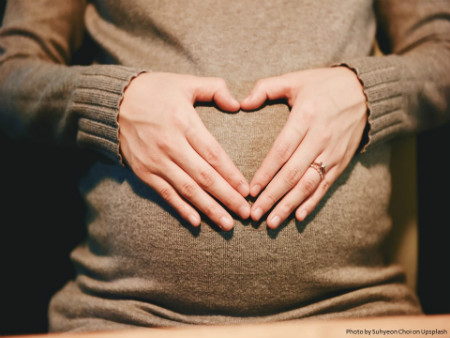Although pregnancy has often been concerned a time of emotional well-being, several recent studies have indicated that women are vulnerable to depression during pregnancy. Analyzing data from the Kaiser Permanente Northwest HMO, researchers assessed the prevalence of depression before, during, and after pregnancy in a group of 4,398 women with pregnancies ending in a live birth. Women identified as being depressed were those with an ICD-9-CM diagnosis indicated in the medical record or those who received at least one prescription for an antidepressant medication. Depression treatment was defined as receiving antidepressant medication and/or attending at least one mental health visit.
This study indicated that about one in seven women was identified as being depressed in the period spanning 39 weeks prior to pregnancy to 39 weeks after pregnancy.
-
Among the 4,398 women assessed, 678 (15.4%) were depressed during at least one period; 8.7%, 6.9%, and 10.4% had depression diagnoses before, during, and/or after pregnancy, respectively.
-
Of the women who were identified as having depression during the 39 weeks before pregnancy, over half (56.4%) of those women also suffered from depression during pregnancy.
-
Of the women with a diagnosis of depression during the postpartum period, 54.2% were also identified as depressed either before or during pregnancy.
This study is consistent with previous reports, indicating a high prevalence of depressive disorders among child-bearing women. However, this type of study may actually underestimate the prevalence of depression. Previous studies have indicated that during pregnancy women are often reluctant to report depressive symptoms and that depression is often overlooked when stringent screening protocols are not employed. In a recent study using the Center for Epidemiological Studies-Depression scale (CES-D) to screen for depression, Drs. Heather Flynn and Sheila Marcus at the University of Michigan, observed higher rates of depression (about 20%) among pregnant women.
The authors stated that 93% of the women with depression received treatment. At face value, this finding is encouraging but unfortunately may be somewhat misleading, as “receiving treatment” in this study is defined as having at least one mental health visit or filling at least one prescription for an antidepressant. Whether these women received adequate treatment is not clear. In the previously mentioned study, overall rates of depression treatment were very low (about 20%) among pregnant women. Furthermore, this study indicated that when treatment was delivered, it was often inadequate. For example, only 43% of those taking antidepressant medications received adequate treatment – antidepressant used at the recommended dose for at least six weeks.
The study highlights the importance of screening women for mood disorders before and during pregnancy, indicating the depression before pregnancy is a significant risk factor for depression during pregnancy. Similarly, depression during pregnancy is a robust predictor of postpartum depression. By indentifying these women at risk for mood disorders early on, it may be possible to use interventions that limit the risk of depression either during pregnancy or after delivery.
Ruta Nonacs, MD PhD








Leave A Comment